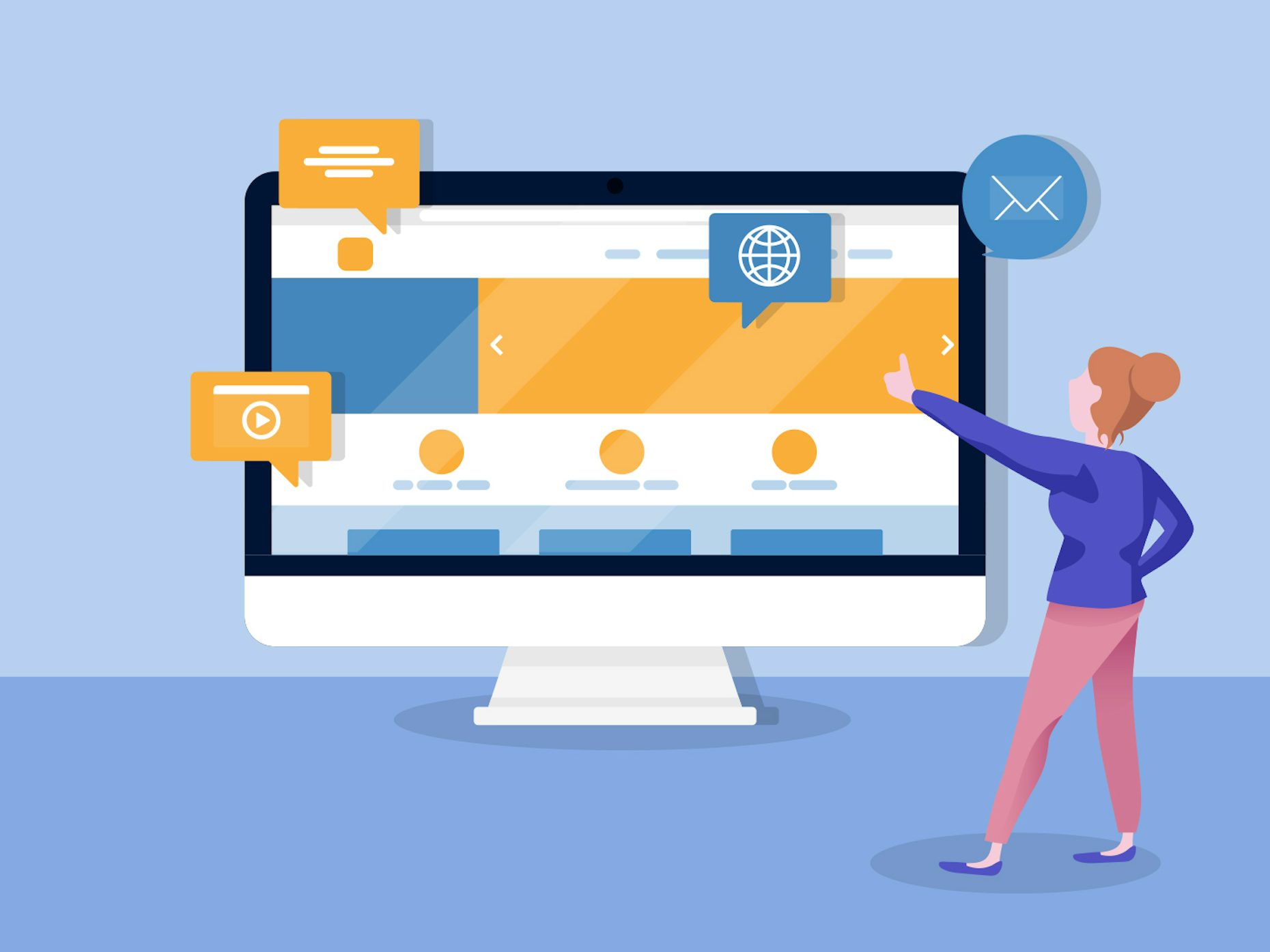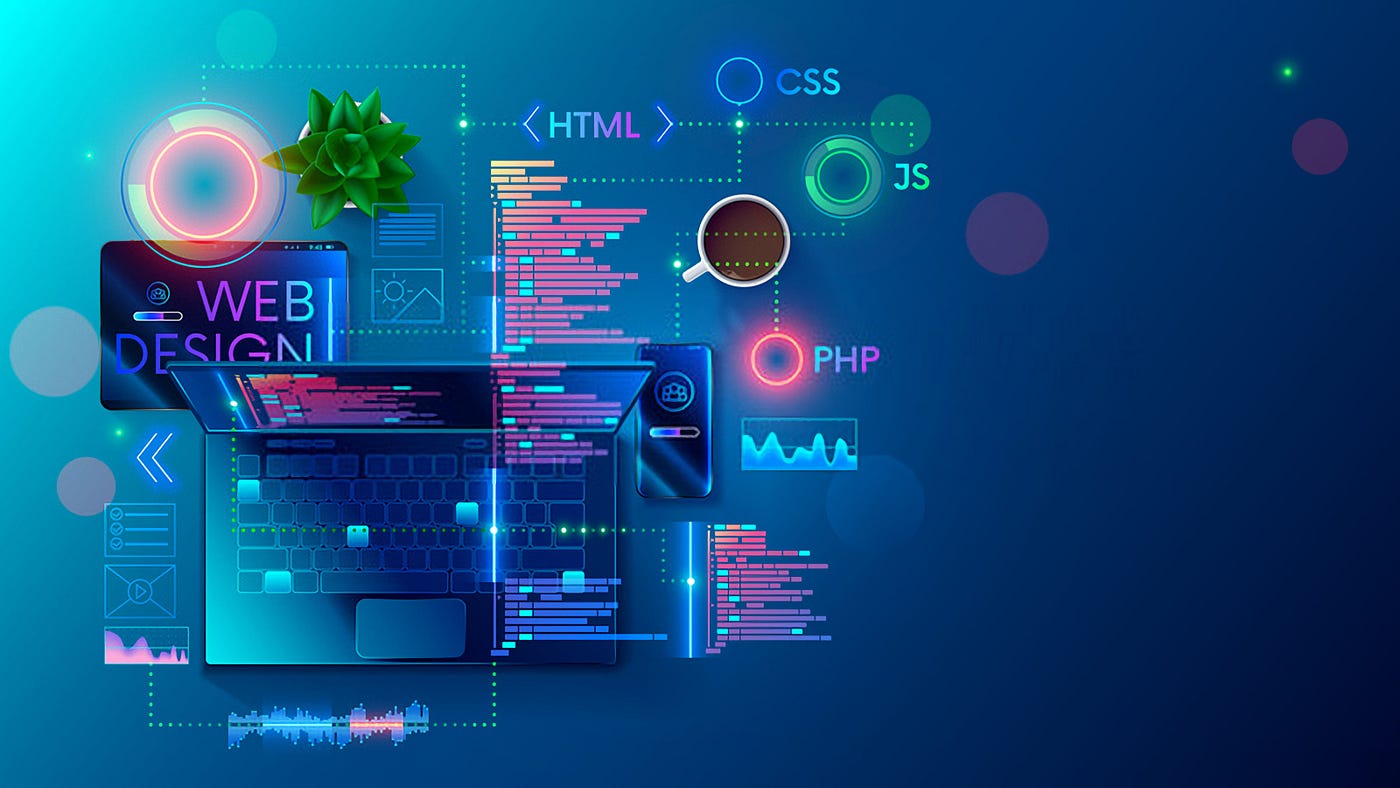All Categories
Featured
Table of Contents
- – Web Design Courses & Tutorials - Codecademy Ti...
- – Web Design - Website Design Tutorials, Articl...
- – Trajectory: Atlanta Web Design Company Tips a...
- – Learn Responsive Design - Web.dev Tips and Tr...
- – Web Design - Linkedin Learning, Formerly Lynd...
- – Learning Web Design: A Beginner's Guide To Ht...
- – Siteinspire - Web Design Inspiration Tips an...
- – Web Design Services + Website Development Ag...
- – Design Principles - U.s. Web Design System (...
- – Basics Of Web Development & Coding Specializ...
- – Figma: The Collaborative Interface Design To...
Web Design Courses & Tutorials - Codecademy Tips and Tricks:
Quick summary Usability and the energy, not the visual style, determine the success or failure of a site. Because the visitor of the page is the only individual who clicks the mouse and therefore chooses whatever, user-centric style has established as a standard technique for successful and profit-oriented web style - web design frederick md.
and the utility, not the visual design, identify the success or failure of a site. Considering that the visitor of the page is the only individual who clicks the mouse and for that reason chooses whatever, user-centric style has actually ended up being a standard approach for effective and profit-oriented web design. After all, if users can't utilize a feature, it may too not exist.
g. where the search box must be placed) as it has actually currently been done in a variety of articles; rather we focus on the approaches which, utilized properly, can result in more advanced style choices and streamline the process of perceiving provided details. Please notice that you might be thinking about the usability-related articles we've published before: Concepts Of Great Website Style And Efficient Web Style Standards, In order to utilize the concepts appropriately we first require to comprehend how users engage with sites, how they believe and what are the basic patterns of users' behavior.
Web Design - Website Design Tutorials, Articles And Free Stuff Tips and Tricks:
Visitors glance at each brand-new page, scan some of the text, and click the first link that catches their interest or slightly resembles the thing they're looking for. There are big parts of the page they don't even look at. The majority of users look for something intriguing (or helpful) and clickable; as quickly as some promising prospects are found, users click.
If a page supplies users with premium content, they are ready to jeopardize the material with advertisements and the style of the website. This is the reason that not-that-well-designed websites with high-quality content acquire a great deal of traffic over years. Material is more vital than the design which supports it.

Very simple concept: If a site isn't able to fulfill users' expectations, then designer stopped working to get his task done appropriately and the company loses cash. The higher is the cognitive load and the less instinctive is the navigation, the more ready are users to leave the site and search for options.
Trajectory: Atlanta Web Design Company Tips and Tricks:
Neither do they scan webpage in a direct style, going sequentially from one site area to another one. Rather users satisfice; they pick the very first affordable alternative. As quickly as they discover a link that looks like it might cause the objective, there is an excellent opportunity that it will be immediately clicked.
It does not matter to us if we comprehend how things work, as long as we can use them. If your audience is going to imitate you're designing signboard, then style terrific signboards." Users desire to have the ability to control their browser and rely on the constant data discussion throughout the site.
If the navigation and site architecture aren't intuitive, the variety of enigma grows and makes it harder for users to comprehend how the system works and how to obtain from point A to point B. A clear structure, moderate visual hints and easily identifiable links can help users to find their path to their objective.
Learn Responsive Design - Web.dev Tips and Tricks:

claims to be "beyond channels, beyond products, beyond distribution". What does it suggest? Considering that users tend to explore sites according to the "F"-pattern, these three statements would be the very first aspects users will see on the page once it is packed. Although the design itself is easy and intuitive, to comprehend what the page has to do with the user requires to look for the answer.
Once you've accomplished this, you can communicate why the system is beneficial and how users can benefit from it. Do Not Misuse Users' Patience, In every task when you are going to use your visitors some service or tool, try to keep your user requirements very little.
Newbie visitors want to, not filling long web forms for an account they may never use in the future. Let users explore the site and find your services without forcing them into sharing private data. It's not reasonable to force users to enter an e-mail address to check the function.
Web Design - Linkedin Learning, Formerly Lynda.com Tips and Tricks:
Stikkit is a perfect example for an user-friendly service which needs practically absolutely nothing from the visitor which is inconspicuous and reassuring. Which's what you want your users to feel on your web website. Obviously, Mite requires more. The registration can be done in less than 30 seconds as the kind has horizontal orientation, the user does not even need to scroll the page.
A user registration alone suffices of an obstacle to user navigation to reduce inbound traffic. 3. Manage To Focus Users' Attention, As sites offer both fixed and vibrant content, some elements of the interface bring in attention more than others do. Obviously, images are more distinctive than the text just as the sentences marked as strong are more appealing than plain text.
Focusing users' attention to specific areas of the site with a moderate usage of visual aspects can assist your visitors to obtain from point A to point B without thinking about how it in fact is supposed to be done. The less question marks visitors have, the they have and the more trust they can establish towards the business the site represents.
Learning Web Design: A Beginner's Guide To Html, Css ... Tips and Tricks:
4. Pursue Feature Exposure, Modern web styles are typically slammed due to their technique of guiding users with aesthetically appealing 1-2-3-done-steps, big buttons with visual results and so on. From the design point of view these components actually aren't a bad thing. On the contrary, such as they lead the visitors through the website content in a very basic and easy to use way.
The website has 9 primary navigation options which are visible at the very first glance. The option of colors may be too light. is an essential concept of successful user interface style. It does not truly matter how this is attained. What matters is that the material is well-understood and visitors feel comfy with the method they engage with the system.
Instead a cost: simply what visitors are looking for. An optimum option for efficient writing is touse brief and concise phrases (come to the point as rapidly as possible), use scannable layout (classify the content, utilize multiple heading levels, utilize visual aspects and bulleted lists which break the circulation of uniform text blocks), use plain and unbiased language (a promo doesn't require to sound like advertisement; give your users some reasonable and objective factor why they must utilize your service or remain on your site)6.
Siteinspire - Web Design Inspiration Tips and Tricks:
Users are seldom on a website to delight in the design; in addition, in many cases they are looking for the details in spite of the design - web design frederick md. Pursue simpleness rather of intricacy. From the visitors' point of view, the best website design is a pure text, without any advertisements or additional material obstructs matching precisely the question visitors utilized or the material they have actually been searching for.
Finch clearly provides the details about the website and provides visitors a choice of choices without overcrowding them with unnecessary material. 7. Do not Be Scared Of The White Area, Actually it's actually difficult to overstate the importance of white space. Not just does it assist to for the visitors, but it makes it possible to view the info presented on the screen.
Complex structures are harder to check out, scan, analyze and work with. If you have the option between separating 2 design segments by a visible line or by some whitespace, it's normally much better to utilize the whitespace service. (Simon's Law): the better you handle to offer users with a sense of visual hierarchy, the simpler your content will be to view.
Web Design Services + Website Development Agency Tips and Tricks:
The very same conventions and rules must be used to all elements.: do the most with the least amount of cues and visual elements. Four major indicate be considered: simplicity, clearness, distinctiveness, and emphasis. Simpleness includes just the aspects that are essential for interaction. Clearness: all components ought to be created so their meaning is not ambiguous.
Conventions Are Our Buddies, Standard design of site elements does not result in an uninteresting web site. As they minimize the discovering curve, the requirement to figure out how things work. It would be an usability nightmare if all sites had various visual discussion of RSS-feeds. That's not that different from our regular life where we tend to get used to basic concepts of how we arrange data (folders) or do shopping (placement of items).
comprehend what they're anticipating from a site navigation, text structure, search positioning etc. A common example from usability sessions is to equate the page in Japanese (presuming your web users do not know Japanese, e. g. with Babelfish) and provide your usability testers with a job to discover something in the page of various language.
Design Principles - U.s. Web Design System (Uswds) Tips and Tricks:
Test Early, Test Often, This so-called TETO-principle must be used to every web style job as functionality tests frequently supply into significant problems and problems related to a provided layout. Test not too late, not too little and not for the wrong reasons.
Some important indicate remember: according to Steve Krug, and testing one user early in the job is better than testing 50 near the end. Accoring to Boehm's very first law, mistakes are most frequent throughout requirements and style activities and are the more expensive the later they are gotten rid of.
That means that you design something, test it, repair it and after that evaluate it once again. There may be problems which haven't been found throughout the preliminary as users were almost obstructed by other issues. functionality tests. Either you'll be indicated the issues you have or you'll be indicated the lack of significant design flaws which is in both cases a helpful insight for your task.
Basics Of Web Development & Coding Specialization - Coursera Tips and Tricks:

This holds for designers also. After you have actually worked on a website for few weeks, you can't observe it from a fresh perspective anymore. You understand how it is built and for that reason you understand exactly how it works you have the knowledge independent testers and visitors of your site would not have.
It can be connected to other locations such as graphic style, user experience, and multimedia arts, but is more appropriately seen from a technological perspective. It has actually ended up being a large part of individuals's daily lives. It is difficult to imagine the Web without animated graphics, different styles of typography, background, videos and music.

Throughout 1991 to 1993 the World Wide Web was born. Text-only pages might be viewed utilizing a basic line-mode browser. In 1993 Marc Andreessen and Eric Bina, produced the Mosaic browser. At the time there were multiple internet browsers, nevertheless most of them were Unix-based and naturally text heavy. There had actually been no integrated technique to graphic style aspects such as images or sounds.
Figma: The Collaborative Interface Design Tool. Tips and Tricks:
The W3C was created in October 1994 to "lead the World Wide Web to its full potential by establishing typical protocols that promote its advancement and ensure its interoperability." This prevented any one business from monopolizing a propriety web browser and shows language, which could have altered the impact of the Web as a whole.
As this has actually taken place the technology of the web has also moved on. There have likewise been significant modifications in the method individuals use and access the web, and this has actually altered how websites are designed.
Learn more about Lovell Media Group LLC or TrainACETable of Contents
- – Web Design Courses & Tutorials - Codecademy Ti...
- – Web Design - Website Design Tutorials, Articl...
- – Trajectory: Atlanta Web Design Company Tips a...
- – Learn Responsive Design - Web.dev Tips and Tr...
- – Web Design - Linkedin Learning, Formerly Lynd...
- – Learning Web Design: A Beginner's Guide To Ht...
- – Siteinspire - Web Design Inspiration Tips an...
- – Web Design Services + Website Development Ag...
- – Design Principles - U.s. Web Design System (...
- – Basics Of Web Development & Coding Specializ...
- – Figma: The Collaborative Interface Design To...
Latest Posts
53 Web Design Tools To Help You Work Smarter In 2022 Tips and Tricks:
Google Web Designer - Home Tips and Tricks:
Responsive Design Best Practices - Google Search Central Tips and Tricks:
More
Latest Posts
53 Web Design Tools To Help You Work Smarter In 2022 Tips and Tricks:
Google Web Designer - Home Tips and Tricks:
Responsive Design Best Practices - Google Search Central Tips and Tricks: